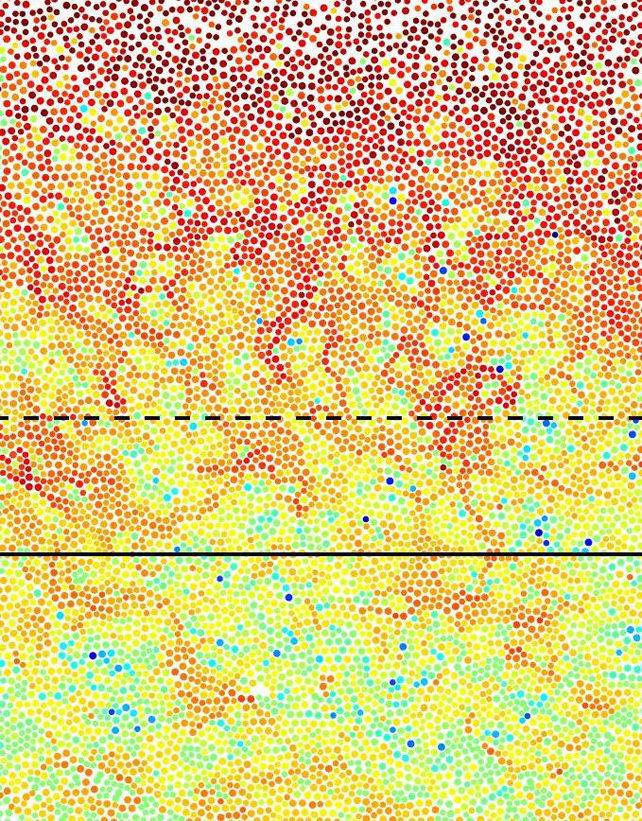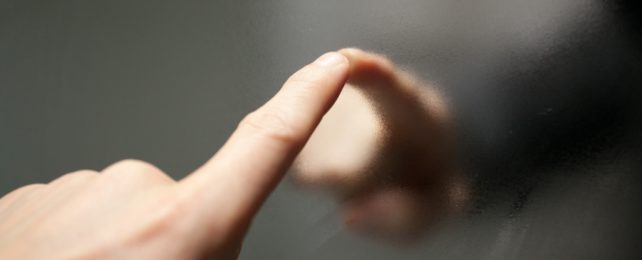Ice isn't always ice all the way through. Even at temperatures well below freezing, its surface can be coated in a film of quasi-liquid atoms, with its thickness usually only a few nanometers.
The process of its formation is known as premelting (or 'surface melting'), and it's why your ice cubes can stick together even in the freezer.
In addition to ice, we've observed a premelted surface layer in a wide range of materials with crystalline structures, those where the atoms inside are arranged in a neatly ordered lattice, like diamonds, quartz, and table salt.
Now, for the first time, scientists have observed surface melting in a substance that's in internal shambles: glass.
Glass and ice can look very similar, but they're often very different on the atomic scale. Where crystalline ice is nice and tidy, glass is what we call an amorphous solid: It has no real atomic structure to speak of. Instead, its atoms are just sort of all higgledy-piggledy crammed in, more like you'd expect to see in a liquid.
This, as you might expect, makes it much more difficult to spot a quasi-liquid premelted film on the surface of glass.
The detection of this filmy liquid layer is usually made by experiments involving scattering neutrons or X-rays, which are sensitive to atomic order.
Solid ice is ordered; the surface melting is less so. In glass, it's all a mess, so scattering wouldn't be a particularly useful tool.
Physicists Clemens Bechinger and Li Tian of the University of Konstanz in Germany took a different approach. Rather than probing a piece of atomic glass, they created something called colloidal glass – a suspension of microscopic glass spheres suspended in a liquid that behaves like the atoms in atomic glass.
Since the spheres are 10,000 times larger than atoms, their behavior can be seen directly under a microscope and, therefore, be studied in more detail.
Using microscopy and scattering, Bechinger and Tian closely examined their colloidal glass, and they identified the signs of surface melting; namely, the particles at the surface were moving faster than the particles in the bulk glass beneath it.
This was not unexpected. The density of the bulk glass is higher than the density of the surface, meaning that the surface particles literally have more room to move. However, in a layer below the surface, up to 30 particle diameters thick, the particles continue to move more rapidly than the bulk glass, even when they reach bulk glass densities.

"Our results demonstrate that surface melting of glasses is qualitatively different compared to crystals and leads to the formation of a surface glassy layer," the researchers write in their paper.
"This layer contains cooperative clusters of highly mobile particles which are formed at the surface and which proliferate deep into the material by several tens of particle diameters and well beyond the region where the particle density saturates."
Since surface melting alters the properties of a material's surface, the results offer a better understanding of glass, which is extremely useful across a range of applications but also pretty wacky.
For example, high surface mobility could explain why thin polymeric and metallic glassy films have high ionic conductivity compared to thick films. We're already putting this property to use in batteries, where these films act as ionic conductors.
A deeper understanding of this property, what causes it, and how it can be induced will help scientists find optimized and even new ways to use it.
The team's research has been published in Nature Communications.
